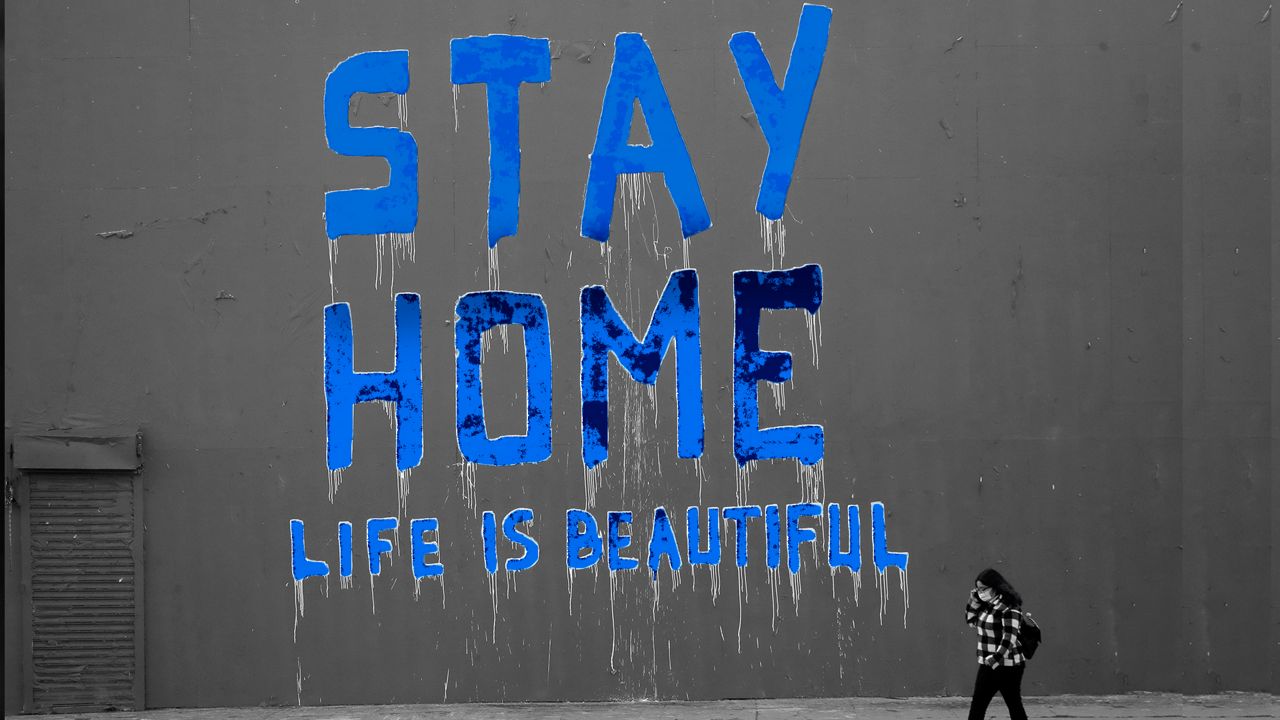NOTE: This story is part of “Together/Alone,” a column from Spectrum News Chief National Political Reporter Josh Robin that explores life during the COVID-19 pandemic.
Five weeks.
What if I told you we could be rid of this in five weeks?
The pandemic would be declared under control with everything back to normal, or near it.
Five weeks is just around Labor Day, right around when kids start school – or only a few weeks into a new school year. What if I told you it would be safe for them to return to school – actual school? No more Zoom or classrooms splintered and staggered by day.
Your business could open. You could go to the movies, drink at a bar.
You could hug your mom without wearing a mask.
All this within five weeks.
This is no dream but the advice of a number of scientists who say that it’s doable. As you can guess, though, it comes at a price: we need to lock down again, only this time we don’t yield until the case count reaches zero. (We remain stuck at about 60,000 new cases a day now).
“The disease can go extinct – so that we would be back in the state we were before we ever had this disease. And that should be the goal because it's a terrible disease.”
So says Yaneer Bar-Yam, an MIT-trained physicist and “complexity scientist,” who bases his closure call on 15 years studying pandemics, including work that helped control the Ebola outbreak in Africa. There are thousands of scientists volunteering with his endcoronavirus.org network, but the sharp national measures are meeting resistance in the White House.
“The reason you want to take really strong action is because then it goes away in weeks,” he told me. “Why would you take weaker action, if it's going to take months or take years, if you can get rid of it in weeks?”
We talked Sunday over Zoom, naturally, as bleak headlines flickered on my screen: The virus is “extraordinarily widespread,” Dr. Deborah Birx, the White House coronavirus coordinator, was saying, with 19,000 more Americans projected to die in less than three weeks. Baseball is teetering. Businesses are closing, unable to make a living with limited capacity.
Bar-Yam, and others say our current patchwork quilt of mask laws, closures and quarantines leave us in a dangerous suspended state with the virus infiltrating any open pathway. He likens it to a raging fire; extinguishing portions won’t cut it; every ember must be snuffed, lest the highly contagious virus spread.
He’s advised international governments and the Centers for Disease Control and Prevention.
He’s also prescient: in May, he wrote an opinion piece criticizing governors for reopening before case counts were sufficiently low: “Prematurely reopening society would likely cause the disease to escalate and lead to prolonged economic hardship.”
There are, of course, major questions: For one, does everyone need to lock down? New York City, for instance, peaked at about 6,400 daily new cases in early April. After a shutdown, gradual reopening, and increased testing and tracking, it’s been fewer than 100.
The short answer is no – not every place needs to shut down in the same way. In the absence of a national lockdown, though, COVID-free “green” areas need to be cordoned off from hot zones yet to be isolated. It’s all about travel. Eventually, green zones can expand, based upon robust and verifiable testing and reporting.
The strategy has its merits: Who doesn’t want to get to normal? But it also requires (temporary) adjustments in core American tenets, top among them the ability to freely travel between states, and resistance to sharing one’s health status, even if the stakes are literally life and death.
Other scientists don’t go this far, publicly at least. Dr. Robert Redfield, who heads the Centers for Disease Control and Prevention, said last month that just by wearing masks, “we can bring this under control within four, six, eight weeks.”
And Dr. Anthony Fauci has said he’s optimistic a vaccine can be ready by early next year.
President Trump said his administration has done an "incredible" job, calling it “under control” in a recent interview with Axios.
But most Americans back a single, national strategy – unlike Trump’s deference to individual governors, according to a new poll from NPR and Ipsos.
“We're paying a huge economic cost for holding this disease in check,” Bar-Yam told me. “We're paying a huge social cost for holding this disease in check.”
As for a vaccine, Bar-Yam says, “maybe it'll happen, maybe it won't. But it'll take a long time or it probably will take a long time. And we're not sure. And how long will it take before everyone can get vaccinated?”
Other nations have essentially brought cases to zero – they’re marked in green on the aptly-named website he runs. In authoritarian China, surveillance technology and a robust police state forced people to quarantine.
Democracies like South Korea, Switzerland, Norway, Denmark, Finland also squashed outbreaks; New Zealand is the most famous example of a nation actually getting to zero. Nearby Australia is, like other places, willing to take the kind of strict, but temporary, measures to also really beat the coronavirus.
On Sunday, when Bar-Yam and I spoke, an 8 p.m.-to-5 a.m. curfew began in Melbourne, a city of 5 million people. Home-based schooling is to return, and daycare closed.
“If we don’t make these changes, we’re not going to get through this,” said Premier Dan Andrews.
This – because of 671 new cases and seven deaths the day before.
I just looked up the latest for Miami-Dade in Florida: 1,210 daily cases and 51 deaths.
That’s of course just one county in the U.S. – and Miami-Dade has nearly half the population as Melbourne, Australia.



